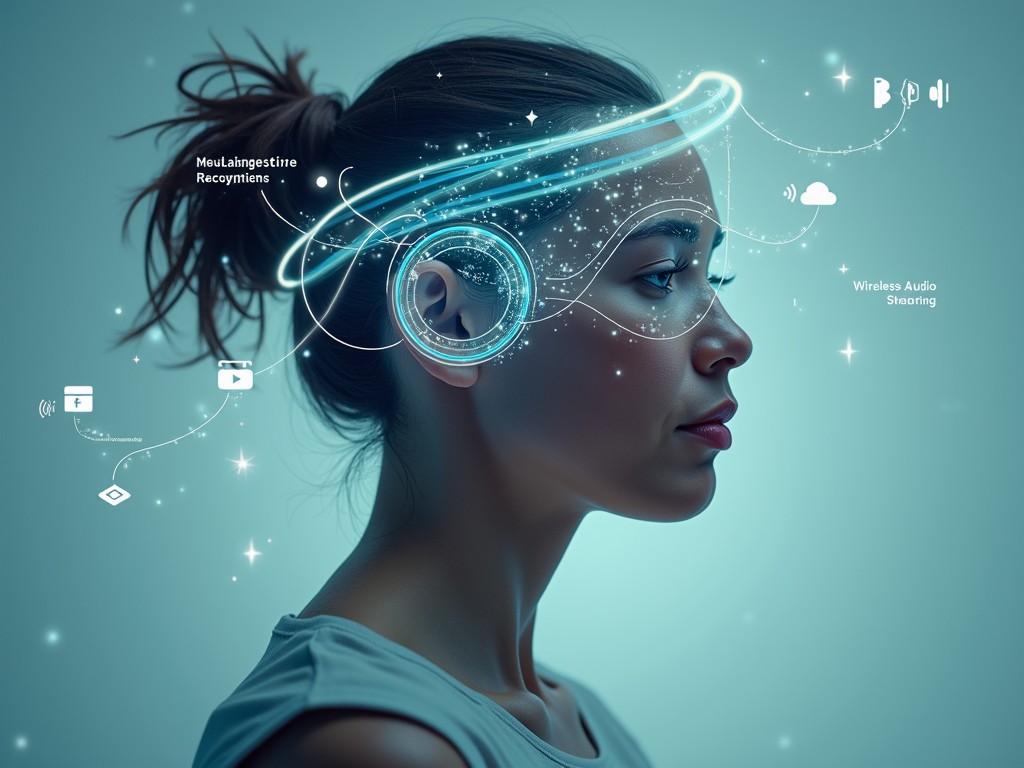
Deaf Community in 2025 and Advancements in Assistive Technology
- Posted by Cicada Sign
- Categories Blog
- Date January 2, 2025
- Comments 0 comment
As we step into 2025, the landscape of assistive technology for the Deaf and hard-of-hearing community continues to evolve, offering innovative solutions that enhance communication, accessibility, and overall quality of life. In this post, we explore some of the most promising advancements set to make a significant impact this year.
The rapid advancement of technology has paved the way for innovative assistive devices and applications tailored to the needs of the Deaf and hard-of-hearing community. These tools are designed to bridge communication gaps, provide greater accessibility, and foster inclusivity in various aspects of daily life.
1. Auracast: Revolutionizing Audio Sharing
Auracast is a groundbreaking Bluetooth technology that transforms the way we share and experience sound. It enables multiple users to connect wirelessly to a single audio source, facilitating group listening experiences and enhancing accessibility in public spaces. This innovation holds particular promise for individuals with hearing loss, allowing for clearer audio transmission in environments such as theaters, lecture halls, and airports.
Example Use Case: In a lecture hall, Auracast can broadcast the lecturer’s voice directly to students’ hearing devices, ensuring clear audio reception for all attendees.
2. AI-Powered Sign Language Recognition
Artificial Intelligence (AI) is making significant strides in recognizing and generating sign language. Emerging AI systems can convert typed text into sign language and interpret sign language into text, facilitating seamless communication between Deaf and hearing individuals. These advancements are poised to enhance accessibility in various settings, from educational institutions to customer service environments.
Example Use Case: A customer service kiosk equipped with AI-driven sign language recognition can assist Deaf customers by interpreting their sign language queries and providing text-based responses.
3. AirPods as Affordable Hearing Aids
Tech giants like Apple are repurposing consumer devices to serve as accessible hearing aids. Recent developments suggest that AirPods may function as over-the-counter hearing aids, offering a cost-effective alternative to traditional devices. This approach aims to make hearing assistance more readily available to a broader population, particularly benefiting those who may not have access to conventional hearing aids.
Example Use Case: An individual experiencing mild hearing loss can use their AirPods, paired with a smartphone app, to amplify ambient sounds and enhance speech clarity during conversations.
4. Real-Time AI Transcription Services
AI-driven transcription services are enhancing real-time communication by providing accurate speech-to-text translation. These tools are invaluable in settings such as classrooms, meetings, and public events, ensuring that Deaf and hard-of-hearing individuals have immediate access to spoken information. However, it’s crucial to acknowledge that while AI transcription has advanced, challenges remain in achieving consistent accuracy, particularly in noisy environments or with diverse accents.
Example Use Case: During a conference, an AI-powered transcription app can display the speaker’s words in real-time on attendees’ devices, ensuring inclusivity for Deaf participants.
5. Enhanced Accessibility Features in Smart Devices
Modern smartphones and tablets are increasingly equipped with accessibility features tailored for the Deaf community. These include real-time text (RTT) capabilities, visual alerts for notifications, and integration with hearing aids. Such features empower users to customize their devices according to their specific needs, promoting independence and seamless communication.
Example Use Case: A Deaf individual can set their smartphone to provide flashing light alerts for incoming calls and messages, ensuring they stay connected without relying on auditory cues.
Conclusion
The year 2025 heralds a new era of assistive technologies that promise to significantly enhance the lives of Deaf and hard-of-hearing individuals. These advancements, from AI-powered sign language recognition to innovative audio-sharing solutions like Auracast, are breaking down barriers and fostering a more inclusive society. As technology continues to evolve, it is imperative to prioritize accessibility and inclusivity, ensuring that these innovations are designed with the diverse needs of the Deaf community in mind.





